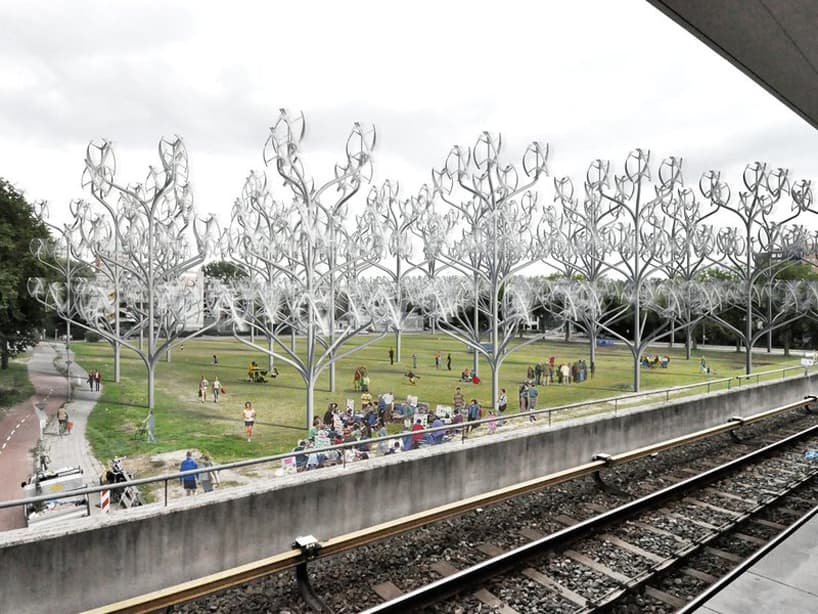Researchers Device Tree-Like Structures To Harvest Electricity
Researchers from the Ohio State University have demonstrated that tree-like structures can be used to convert random forces acting upon them into electricity.
This comes as wonderful news in this power-hungry era. The world is trying to find new, renewable sources to meet its growing energy expenditure. Research is being done to investigate feasibilities of various forms of energy generation, and OSU’s research might provide a strong platform for future projects to be built on.

The “trees†are basically simple steel beams that act as the trunk and branches, connected by an electro-mechanical material called Polyvinylidine flouride (PVDF). PVDF converts the mechanical movement, or vibrations, of the structure into electrical energy.
In the past, researchers have experimented on the ability of such structures to produce electricity, making use of idealized vibrations. The researchers from Ohio also used systematic vibrations at first, and the structure produced 0.8 volts of electricity. When subjected to random vibrations the structure was able to produce around 2 volts of electricity; proving that such structures could be used in natural scenarios to produce energy dependably.
The researchers believe that early applications of the technology will be largely small scale, such as powering sensors that monitor structural integrity of building, bridges, etc. As all infrastructure vibrates, although imperceptibly, miniature “trees†mounted on them would be able to generate a small yet steady stream of electricity, which could then be used for various applications.
Even though the technology is expected to start small scale, it wouldn’t be wrong to say that it can have extensive large scale applications in the future. Hopefully, it will; a field of swaying trees is a much better view than a field of windmills anyway.
Source: #-Link-Snipped-#
This comes as wonderful news in this power-hungry era. The world is trying to find new, renewable sources to meet its growing energy expenditure. Research is being done to investigate feasibilities of various forms of energy generation, and OSU’s research might provide a strong platform for future projects to be built on.

The “trees†are basically simple steel beams that act as the trunk and branches, connected by an electro-mechanical material called Polyvinylidine flouride (PVDF). PVDF converts the mechanical movement, or vibrations, of the structure into electrical energy.
In the past, researchers have experimented on the ability of such structures to produce electricity, making use of idealized vibrations. The researchers from Ohio also used systematic vibrations at first, and the structure produced 0.8 volts of electricity. When subjected to random vibrations the structure was able to produce around 2 volts of electricity; proving that such structures could be used in natural scenarios to produce energy dependably.
The researchers believe that early applications of the technology will be largely small scale, such as powering sensors that monitor structural integrity of building, bridges, etc. As all infrastructure vibrates, although imperceptibly, miniature “trees†mounted on them would be able to generate a small yet steady stream of electricity, which could then be used for various applications.
Even though the technology is expected to start small scale, it wouldn’t be wrong to say that it can have extensive large scale applications in the future. Hopefully, it will; a field of swaying trees is a much better view than a field of windmills anyway.
Source: #-Link-Snipped-#
0
